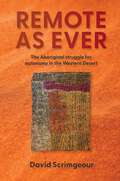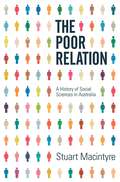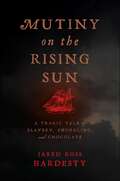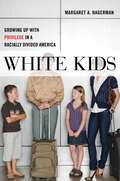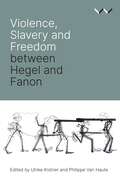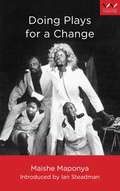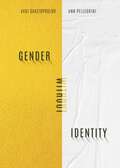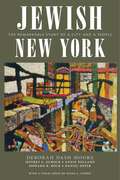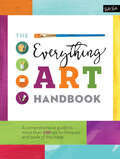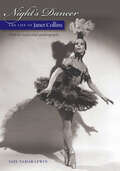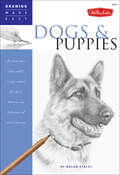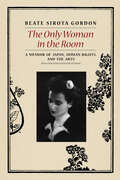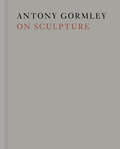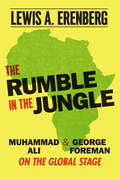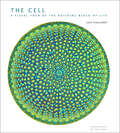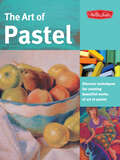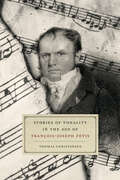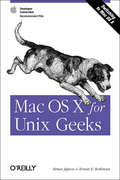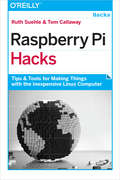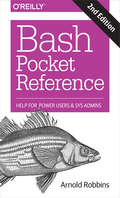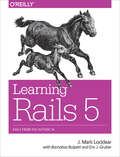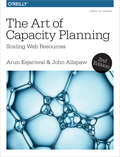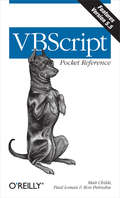- Table View
- List View
Remote as Ever: The Aboriginal Struggle for Autonomy in Australia's Western Desert
by David ScrimgeourIn Remote as Ever, David Scrimgeour tells the story of his working life as a doctor in isolated communities in Australia's Western Desert in the late 1970s. Being involved in the Homelands movement and the Aboriginal community-controlled health campaign gave him significant insight into the strength of the Aboriginal struggle for autonomy-a struggle too often undermined by government policy. In an account replete with strong controversies and stronger personalities, Scrimgeour demonstrates that the future of these communities, and indeed the health of its individual members, remain in the balance.
Poor Relation: A History of Social Sciences in Australia
by Stuart MacintyreWhat are the social sciences? What do they do? How are they practised in Australia? The Poor Relation examines the place of the social sciences - from economics and psychology to history, law and philosophy - in the teaching and research conducted by Australian universities. Across sixty years, The Poor Relation charts the changing circumstances of the social sciences, and measures their contribution to public policy. In doing so it also relates the arrangements made to support them and explains why they are so persistently treated as the poor relation of science and technology.
Mutiny on the Rising Sun: A Tragic Tale of Slavery, Smuggling, and Chocolate
by Jared Ross HardestyA little-known story of mutiny and murder illustrating the centrality of smuggling and slavery in early American societyOn the night of June 1, 1743, terror struck the schooner Rising Sun. After completing a routine smuggling voyage where the crew sold enslaved Africans in exchange for chocolate, sugar, and coffee in the Dutch colony of Suriname, the ship traveled eastward along the South American coast. Believing there was an opportunity to steal the lucrative cargo and make a new life for themselves, three sailors snuck below deck, murdered four people, and seized control of the vessel.Mutiny on the Rising Sun recounts the origins, events, and eventual fate of the Rising Sun’s final smuggling voyage in vivid detail. Starting from that horrible night in June 1743, it narrates a deeply human history of smuggling, providing an incredible story of those caught in the webs spun by illicit commerce. The case generated a rich documentary record that illuminates an international chocolate smuggling ring, the lives of the crew and mutineers, and the harrowing experience of the enslaved people trafficked by the Rising Sun. Smuggling stood at the center of the lives of everyone involved with the business of the schooner. Larger forces, such as imperial trade restrictions, created the conditions for smuggling, but individual actors, often driven by raw ambition and with little regard for the consequences of their actions, designed, refined, and perpetuated this illicit commerce. At once startling and captivating, Mutiny on the Rising Sun shows how illegal trade created demand for exotic products like chocolate, and how slavery and smuggling were integral to the development of American capitalism.
White Kids: Growing Up with Privilege in a Racially Divided America (Critical Perspectives on Youth #1)
by Margaret A. HagermanWinner, 2019 William J. Goode Book Award, given by the Family Section of the American Sociological AssociationFinalist, 2019 C. Wright Mills Award, given by the Society for the Study of Social ProblemsRiveting stories of how affluent, white children learn about race American kids are living in a world of ongoing public debates about race, daily displays of racial injustice, and for some, an increased awareness surrounding diversity and inclusion. In this heated context, sociologist Margaret A. Hagerman zeroes in on affluent, white kids to observe how they make sense of privilege, unequal educational opportunities, and police violence. In fascinating detail, Hagerman considers the role that they and their families play in the reproduction of racism and racial inequality in America.White Kids, based on two years of research involving in-depth interviews with white kids and their families, is a clear-eyed and sometimes shocking account of how white kids learn about race. In doing so, this book explores questions such as, “How do white kids learn about race when they grow up in families that do not talk openly about race or acknowledge its impact?” and “What about children growing up in families with parents who consider themselves to be ‘anti-racist’?”Featuring the actual voices of young, affluent white kids and what they think about race, racism, inequality, and privilege, White Kids illuminates how white racial socialization is much more dynamic, complex, and varied than previously recognized. It is a process that stretches beyond white parents’ explicit conversations with their white children and includes not only the choices parents make about neighborhoods, schools, peer groups, extracurricular activities, and media, but also the choices made by the kids themselves. By interviewing kids who are growing up in different racial contexts—from racially segregated to meaningfully integrated and from politically progressive to conservative—this important book documents key differences in the outcomes of white racial socialization across families. And by observing families in their everyday lives, this book explores the extent to which white families, even those with anti-racist intentions, reproduce and reinforce the forms of inequality they say they reject.
Violence, Slavery and Freedom between Hegel and Fanon
by Ulrike Kistner Philippe Van Haute Robert Bernasconi Ato Sekyi-Otu Josias Tembo Beata Stawarska Reingard NethersoleA deep dive into the influences of Hegelian thought on the work of revolutionary and postcolonial theorist Frantz FanonHegel is most often mentioned – and not without good reason – as one of the paradigmatic exponents of Eurocentrism and racism in Western philosophy. But his thought also played a crucial and formative role in the work of one of the iconic thinkers of the ‘decolonial turn’, Frantz Fanon. This would be inexplicable if it were not for the much-quoted ‘lord-bondsman’ dialectic – frequently referred to as the ‘master-slave dialectic’ – described in Hegel's The Phenomenology of Spirit. Fanon takes up this dialectic negatively in contexts of violence-riven (post-)slavery and colonialism; yet in works such as Black Skin, White Masks and The Wretched of the Earth he upholds a Hegelian-inspired vision of freedom.The essays in this collection offer close readings of Hegel’s text, and of responses to it in the work of twentieth-century philosophers, that highlight the entangled history of the translations, transpositions and transformations of Hegel in the work of Fanon, and more generally in colonial, postcolonial and decolonial contexts.
Doing Plays for a Change: Five Works
by Maishe MaponyaThese five plays by one of South Africa’s foremost black playwrights were written between 1979 and 1986, a period in the country’s history marked by intense repression and escalating violence. Several of Maponya's works fell foul of the censorship system. The works included in this collection - ‘The Hungry Earth’, ‘Dirty Work’, ‘Gangsters’, ‘Umongikazi/The Nurse’ and ‘Jika’ – look at topics such as the lives of miners, apartheid in hospitals, and the workings of the security apartheid state and its agents. His plays are multilingual, using agitprop and physical theatre techniques. Maponya won the 1985 Standard Bank Young Artists award. Doing Plays for a Change: Five Works is introduced by Professor Ian Steadman, former Head of the Drama Department of the University of the Witwatersrand, and Dean of the Faculty of Arts.
Gender Without Identity
by Ann Pellegrini Avgi SaketopoulouWinner of the 2024 Silver Medal for LGBTQ+ Non-Fiction from the Independent Publisher Book Awards.Offers a radical theory of gender formation and its ongoing mutationsGender Without Identity challenges the argument widely embraced by rights activists and many members of the LGBTQ+ community that gender identity is innate and immutable. Avgi Saketopoulou and Ann Pellegrini chart another path towards the flourishing of queer and trans life. Positing that the idea of an innate core gender identity is simplistic, problematic, and, even, potentially harmful to LGBTQ+ people, they instead argue that gender is something all subjects acquire.Trauma, they provocatively propose, sometimes has a share in that acquisition. In their way of thinking, lived trauma as well as structural and intergenerationally transmitted traumatic debris may become a resource for transness and queerness. Such a suggestion importantly counters conservative accounts that identify trauma as disrupting or “warping” some putatively “normal” gender. Rooted in the work of French psychoanalyst Jean Laplanche, in queer and trans of color critique, and in the authors’ extensive clinical experience with queer and trans people, Gender Without Identity offers a radical theory of gender formation and its ongoing mutations.
Jewish New York: The Remarkable Story of a City and a People
by Daniel Soyer Annie Polland Howard B. Rock Jeffrey S. Gurock Deborah Dash MooreThe definitive history of Jews in New York and how they transformed the cityJewish New York reveals the multifaceted world of one of the city’s most important ethnic and religious groups. Jewish immigrants changed New York. They built its clothing industry and constructed huge swaths of apartment buildings. New York Jews helped to make the city the center of the nation’s publishing industry and shaped popular culture in music, theater, and the arts. With a strong sense of social justice, a dedication to civil rights and civil liberties, and a belief in the duty of government to provide social welfare for all its citizens, New York Jews influenced the city, state, and nation with a new wave of social activism.In turn, New York transformed Judaism and stimulated religious pluralism, Jewish denominationalism, and contemporary feminism. The city’s neighborhoods hosted unbelievably diverse types of Jews, from Communists to Hasidim. Jewish New York not only describes Jews’ many positive influences on New York, but also exposes their struggles with poverty and anti-Semitism. These injustices reinforced an exemplary commitment to remaking New York into a model multiethnic, multiracial, and multireligious world city. Based on the acclaimed multi-volume set City of Promises: A History of the Jews of New York winner of the National Jewish Book Council 2012 Everett Family Foundation Jewish Book of the Year Award, Jewish New York spans three centuries, tracing the earliest arrival of Jews in New Amsterdam to the recent immigration of Jews from the former Soviet Union.
Water: Abundance, Scarcity, and Security in the Age of Humanity (Global Challenges In Water Governance Ser.)
by Jeremy J. SchmidtAn intellectual history of America's water management philosophyHumans take more than their geological share of water, but they do not benefit from it equally. This imbalance has created an era of intense water scarcity that affects the security of individuals, states, and the global economy. For many, this brazen water grab and the social inequalities it produces reflect the lack of a coherent philosophy connecting people to the planet. Challenging this view, Jeremy Schmidt shows how water was made a “resource” that linked geology, politics, and culture to American institutions. Understanding the global spread and evolution of this philosophy is now key to addressing inequalities that exist on a geological scale. Water: Abundance, Scarcity, and Security in the Age of Humanity details the remarkable intellectual history of America’s water management philosophy. It shows how this philosophy shaped early twentieth-century conservation in the United States, influenced American international development programs, and ultimately shaped programs of global governance that today connect water resources to the Earth system. Schmidt demonstrates how the ways we think about water reflect specific public and societal values, and illuminates the process by which the American approach to water management came to dominate the global conversation about water. Debates over how human impacts on the planet are connected to a new geological epoch—the Anthropocene—tend to focus on either the social causes of environmental crises or scientific assessments of the Earth system. Schmidt shows how, when it comes to water, the two are one and the same. The very way we think about managing water resources validates putting ever more water to use for some human purposes at the expense of others.
The Everything Art Handbook: A Comprehensive Guide to More Than 100 Art Techniques and Tools of the Trade
by Walter Foster Creative TeamPick up your pencil or brush and start creating with this go-to resource for artists of all skill levels, covering drawing, painting, and mixed media.A refreshing, accessible compendium of art materials and techniques, The Everything Art Handbook is the perfect all-inclusive resource for beginning artists wanting to experiment and play with a variety of art mediums and techniques.The Everything Art Handbook is divided into sections focusing on different types of mediums and art concepts. Each section includes a basic overview of the topic, instructions for selecting and working with the right tools and materials, step-by-step sample artwork, and helpful sidebars with advice from professional artists.Expand and refresh your artistic skills with such topics as:Getting started, including how to set up a studio and where to find inspirationArt fundamentals, such as value and light, perspective, and compositionColor basics, including complementary colors, primaries, secondaries, and neutralsDrawing techniques for working with graphite, charcoal, colored pencil, pastel, pen and ink, and morePainting techniques for working with oil, acrylic, and watercolorMixed media tools and techniques, including stamping, encaustics, and texturesUsing clear, informative explanations for achieving the best results, The Everything Art Handbook is an approachable reference guide for contemporary artists of any skill level.
Night's Dancer: The Life of Janet Collins
by Yaël Tamar LewinThe biography of the first African-American prima ballerinaWinner of the The Marfield Prize / National Award for Arts Writing (2011) Dancer Janet Collins, born in New Orleans in 1917 and raised in Los Angeles, soared high over the color line as the first African-American prima ballerina at the Metropolitan Opera. Night's Dancer chronicles the life of this extraordinary and elusive woman, who became a unique concert dance soloist as well as a black trailblazer in the white world of classical ballet. During her career, Collins endured an era in which racial bias prevailed, and subsequently prevented her from appearing in the South. Nonetheless, her brilliant performances transformed the way black dancers were viewed in ballet. The book begins with an unfinished memoir written by Collins in which she gives a captivating account of her childhood and young adult years, including her rejection by the Ballet Russe de Monte Carlo. Dance scholar Yaël Tamar Lewin then picks up the thread of Collins's story. Drawing on extensive research and interviews with Collins and her family, friends, and colleagues to explore Collins's development as a dancer, choreographer, and painter, Lewin gives us a profoundly moving portrait of an artist of indomitable spirit.
Dogs & Puppies: Discover Your Inner Artist As You Explore The Basic Theories And Techniques Of Pencil Drawing (Drawing Made Easy)
by Nolon StaceyAn easy-to-follow guide to drawing canines, from sketching bodies, faces and hair to creating animal portraits of a favorite pet.Many aspiring artists want to draw a portrait of their best friend—especially where their pal has four paws and fur! This newest addition to the Drawing Made Easy series pairs our best-selling medium with the wildly popular subject of dogs and puppies. Unlike similar titles on the market, this book doesn’t simply provide a collection of dogs for artists to re-create exactly. Instead, the book focuses on techniques specific to drawing accurate depictions of dogs and puppies—from creating a variety of fur types and features to achieving accurate proportions—so that artists can use the knowledge to render their own canine portraits. The book also includes a series of easy-to-follow, step-by-step projects showcasing a range of dog breeds, poses and props. This allows artists to practice their developing skills, guiding them from simple sketches through the study of various techniques to polished renderings.
The Only Woman in the Room: A Memoir of Japan, Human Rights, and the Arts
by Beate Sirota Gordon“This engaging, modest account recalls the life and times of a woman who made significant contributions to both Japanese and American cultures.” —Publishers WeeklyIn 1946, at age twenty-two, Beate Sirota Gordon helped to draft the new postwar Japanese Constitution. The Only Woman in the Room chronicles how a daughter of Russian Jews became the youngest woman to aid in the rushed, secret drafting of a constitution; how she almost single-handedly ensured that it would establish the rights of Japanese women; and how, as a fluent speaker of Japanese and the only woman in the room, she assisted the American negotiators as they worked to persuade the Japanese to accept the new charter.Sirota was born in Vienna, but in 1929 her family moved to Japan so that her father, a noted pianist, could teach, and she grew up speaking German, English, and Japanese. Russian, French, Italian, Latin, and Hebrew followed, and at fifteen Sirota was sent to complete her education at Mills College in California. Translating was one of Sirota’s many talents, and when World War II ended, she was sent to Japan as a language expert to help the American occupation forces. When General MacArthur suddenly created a team that included Sirota to draft the new Japanese Constitution, he gave them just eight days to accomplish the task, and she seized the opportunity to write into law guarantees of equality unparalleled in the US Constitution to this day.But this was only one episode in an extraordinary life, and The Only Woman in the Room recounts, after a fifty-year silence, a life lived with purpose and courage.
Antony Gormley on Sculpture
by Antony GormleyOne of the most exciting sculptors of our time, Antony Gormley is the creator of breathtaking public installations. Even casual fans will recognize Event Horizon, a collection of thirty-one life-size casts of the artist’s body that have been installed atop buildings in places like London’s South Bank and New York’s Madison Square, and Field, formed by tens of thousands of standing clay figurines overflowing across a room’s floor. Projects like these demonstrate Gormley’s ongoing interest in exploring the human form and its relationships with the rest of the material world, and in Antony Gormley on Sculpture, he shares valuable insight into his work and the history of sculpture itself. Combining commentary on his own works with discussions of other artists and the Eastern religious traditions that have inspired him, Gormley offers wisdom on topics such as the body in space, how to approach an environment when conceiving an installation, bringing mindfulness and internal balance to sculpture, and much more. Lavishly illustrated, this book will be of interest to not only art lovers, curators, and critics, but also artists and art students. Dynamic and thought-provoking, Antony Gormley on Sculpture is essential reading for anyone fascinated by sculpture and its long and complex history as a medium.
The Rumble in the Jungle: Muhammad Ali & George Foreman on the Global Stage
by Lewis A. ErenbergThe 1974 fight between Muhammad Ali and George Foreman, staged in the young nation of Zaire and dubbed the Rumble in the Jungle, was arguably the biggest sporting event of the twentieth century. The bout between an ascendant undefeated champ and an outspoken master trying to reclaim the throne was a true multimedia spectacle. A three-day festival of international music—featuring James Brown, Miriam Makeba, and many others—preceded the fight itself, which was viewed by a record-breaking one billion people worldwide. Lewis A. Erenberg’s new book provides a global perspective on this singular match, not only detailing the titular fight but also locating it at the center of the cultural dramas of the day.TheRumble in the Jungle orbits around Ali and Foreman, placing them at the convergence of the American Civil Rights movement and the Great Society, the rise of Islamic and African liberation efforts, and the ongoing quest to cast off the shackles of colonialism. With his far-reaching take on sports, music, marketing, and mass communications, Erenberg shows how one boxing match became nothing less than a turning point in 1970s culture.
The Cell: A Visual Tour of the Building Block of Life
by Jack Challoner“Handsome and elegantly designed, this tour through the cell’s history and diversity in form and function is a delight to peruse . . . stunning.” —American ScientistWith The Cell, Jack Challoner treats readers to a visually striking tour of these remarkable molecular machines. Most of the living things we’re familiar with—the plants in our gardens, the animals we eat—are composed of billions or trillions of cells. Most multicellular organisms consist of many different types of cells, each highly specialized to play a particular role—from building bones or producing the pigment in flower petals to fighting disease or sensing environmental cues. But the great majority of living things on our planet exist as single cell. These cellular singletons are every bit as successful and diverse as multicellular organisms, and our very existence relies on them.The book is an authoritative yet accessible account of what goes on inside every living cell—from building proteins and producing energy to making identical copies of themselves—and the importance of these chemical reactions both on the familiar everyday scale and on the global scale. Along the way, Challoner sheds light on many of the most intriguing questions guiding current scientific research: What special properties make stem cells so promising in the treatment of injury and disease? How and when did single-celled organisms first come together to form multicellular ones? And how might scientists soon be prepared to build on the basic principles of cell biology to build similar living cells from scratch?“Small really is beautiful: Psychedelic images show the inner workings of cells in stunning detail.” —Daily Mail
The Art of Pastel: Discover Techniques for Creating Beautiful Works of Art in Pastel
by Walter Foster Creative Team“Three accomplished artists each present an original take on the medium . . . This is a comprehensive guide for beginners.” —Library JournalThe velvety strokes of pastel have enchanted fine artists for more than a century. From airy strokes to bold marks and soft hues to vibrant shades, the versatility of pastel makes it suitable for a wide range of subjects and moods. Now anyone can experience this multi-dimensional medium with The Art of Pastel. Inside this comprehensive guide, three artists provide instruction for using soft, hard, and oil pastel—each sharing his or her unique approach. From portraits and landscapes to rich floral scenes, this book contains a wealth of inspiring images that artists can re-create step by step.
Darwin's Orchids: Then & Now
by Retha Edens-Meier and Peter BernhardtFor biologists, 2009 was an epochal year: the bicentennial of Charles Darwin’s birth and the 150th anniversary of the publication of a book now known simply as The Origin of Species. But for many botanists, Darwin’s true legacy starts with the 1862 publication of another volume: On the Various Contrivances by Which British and Foreign Orchids Are Fertilised by Insects and on the Good Effects of Intercrossing, or Fertilisation of Orchids. This slim but detailed book with the improbably long title was the first in a series of plant studies by Darwin that continues to serve as a global exemplar in the field of evolutionary botany. In Darwin’s Orchids, an international group of orchid biologists unites to celebrate and explore the continuum that stretches from Darwin’s groundbreaking orchid research to that of today. Mirroring the structure of Fertilisation of Orchids, Darwin’s Orchids investigates flowers from Darwin’s home in England, through the southern hemisphere, and on to North America and China as it seeks to address a set of questions first put forward by Darwin himself: What pollinates this particular type of orchid? How does its pollination mechanism work? Will an orchid self-pollinate or is an insect or other animal vector required? And how has this orchid’s lineage changed over time? Diverse in their colors, forms, aromas, and pollination schemes, orchids have long been considered ideal models for the study of plant evolution and conservation. Looking to the past, present, and future of botany, Darwin’s Orchids will be a vital addition to this tradition.
Stories of Tonality in the Age of François-Joseph Fétis
by Thomas ChristensenStories of Tonality in the Age of François-Joseph Fétis explores the concept of musical tonality through the writings of the Belgian musicologist François-Joseph Fétis (1784–1867), who was singularly responsible for theorizing and popularizing the term in the nineteenth century. Thomas Christensen weaves a rich story in which tonality emerges as a theoretical construct born of anxiety and alterity for Europeans during this time as they learned more about “other” musics and alternative tonal systems. Tonality became a central vortex in which French musicians thought—and argued—about a variety of musical repertoires, be they contemporary European musics of the stage, concert hall, or church, folk songs from the provinces, microtonal scale systems of Arabic and Indian music, or the medieval and Renaissance music whose notational traces were just beginning to be deciphered by scholars. Fétis’s influential writings offer insight into how tonality ingrained itself within nineteenth-century music discourse, and why it has continued to resonate with uncanny prescience throughout the musical upheavals of the twentieth and twenty-first centuries.
Mac OS X for Unix Geeks
by Brian Jepson Ernest E. RothmanIf you're one of the many Unix developers drawn to Mac OS X for its BSD core, you'll find yourself in surprisingly unfamiliar territory. Even if you're an experienced Mac user, Mac OS X is unlike earlier Macs, and it's radically different from the Unix you've used before, too.Enter "Mac OS X for Unix Geeks" by Brian Jepson and Ernest E. Rothman, two Unix geeks who found themselves in the same place you are. Their new book is your guide to figuring out the BSD Unix system and Mac-specific components that are making your life difficult and to help ease you into the Unix inside Mac OS X. This concise book includes such topics as:A quick overview of the Terminal applicationUnderstanding Open Directory (LDAP) and NetInfoIssues related to using the GNU C Compiler 9GCCLibrary linking and porting Unix softwareAn overview of Mac OS X?s filesystem and startup processesCreating and installing packages using FinkBuilding the Darwin kernelRunning X Windows on top of Mac OS XThe book wraps up with a quick manpage-style reference to the "Missing Manual Pages"--commands that come with Mac OS X although there are no manpages.If you find yourself disoriented by the new Mac environment, Mac OS X for Unix Geeks can help you acclimate yourself quickly to the familiar, yet foreign, Unix landscape.
Raspberry Pi Hacks: Tips & Tools for Making Things with the Inexpensive Linux Computer
by Ruth Suehle Tom CallawayWith more than 60 practical and creative hacks, this book helps you turn Raspberry Pi into the centerpiece of some cool electronics projects. Want to create a controller for a camera or a robot? Set up Linux distributions for media centers or PBX phone systems? That’s just the beginning of what you’ll find inside Raspberry Pi Hacks.If you’re looking to build either a software or hardware project with more computing power than Arduino alone can provide, Raspberry Pi is just the ticket. And the hacks in this book will give you lots of great ideas.Use configuration hacks to get more out of your PiBuild your own web server or remote print serverTake the Pi outdoors to monitor your garden or control holiday lightsConnect with SETI or construct an awesome Halloween costumeHack the Pi’s Linux OS to support more complex projectsDecode audio/video formats or make your own music playerAchieve a low-weight payload for aerial photographyBuild a Pi computer cluster or a solar-powered lab
Bash Pocket Reference: Help for Power Users and Sys Admins
by Arnold RobbinsItâ??s simple: if you want to interact deeply with Mac OS X, Linux, and other Unix-like systems, you need to know how to work with the Bash shell. This concise little book puts all of the essential information about Bash right at your fingertips.Youâ??ll quickly find answers to the annoying questions that generally come up when youâ??re writing shell scripts: What characters do you need to quote? How do you get variable substitution to do exactly what you want? How do you use arrays? Updated for Bash version 4.4, this book has the answers to these and other problems in a format that makes browsing quick and easy.Topics include:Invoking the shellSyntaxFunctions and variablesArithmetic expressionsCommand historyProgrammable completionJob controlShell optionsCommand executionCoprocessesRestricted shellsBuilt-in commands
Learning Rails 5: Rails from the Outside In
by Eric J Gruber J. Mark Locklear Barnabas BulpettIf you’re a web developer or designer ready to learn Ruby on Rails, this hands-on guide is the ideal way to get started. Rather than toss you into the middle of the framework’s Model-View-Controller architecture, as many books do, Learning Rails 5 begins with the foundations of the Web you already know.You’ll learn how to create something visible with Rails’ view layer before diving into the more difficult inner layers: the database models and controller code. All you need to begin your Rails journey is HTML experience. Each chapter includes exercises and review questions to test your understanding as you go.Present content by building an application with a basic view and a simple controllerBuild forms and process their results, progressing from simple to more complexUse Rails scaffolding and REST to build effective applications quicklyConnect forms to models and create code that maps directly to database structuresBuild applications that combine data from multiple tablesUse migrations to track changes to your database over timeAdd common elements such as sessions, cookies, and authentication
The Art of Capacity Planning: Scaling Web Resources in the Cloud
by John Allspaw Arun KejariwalIn their early days, Twitter, Flickr, Etsy, and many other companies experienced sudden spikes in activity that took their web services down in minutes. Today, determining how much capacity you need for handling traffic surges is still a common frustration of operations engineers and software developers. This hands-on guide provides the knowledge and tools you need to measure, deploy, and manage your web application infrastructure before you experience explosive growth.In this thoroughly updated edition, authors Arun Kejariwal (MZ) and John Allspaw provide a systematic, robust, and practical approach to capacity planning—rather than theoretical models—based on their own experiences and those of many colleagues in the industry. They address the vast sea change in web operations, especially cloud computing.Understand issues that arise on heavily trafficked websites or mobile appsExplore how capacity fits into web/mobile app availability and performanceUse tools for measuring and monitoring computer performance and usageTurn measurement data into robust forecasts and learn how trending fits into the planning processExamine related deployment concepts: installation, configuration, and management automationLearn how cloud autoscaling enables you to scale your app’s capacity up or down
VBScript Pocket Reference
by Paul Lomax Ron Petrusha Matt ChildsMicrosoft's Visual Basic Scripting Edition (VBScript), a subset of Visual Basic for Applications, is a powerful language for Internet application development, where it can serve as a scripting language for server-side, client-side, and system scripting. Whether you're developing code for Active Server Pages, client-side scripts for Internet Explorer, code for Outlook forms, or scripts for Windows Script Host, VBScript Pocket Reference will be your constant companion.Don't let the pocket-friendly format fool you. Based on the bestsellingVBScript in a Nutshell, this small book details every VBScript language element--every statement, function, and object--both in VBScript itself, and in the Microsoft Scripting Runtime Library. There's a special emphasis on the following details:The syntax, using standard code conventionsThe arguments accepted by the function or procedure, if any existEntries are arranged alphabetically by topic, so that you can, for instance, easily find details about that string-handling function that you can't quite remember. In addition, appendixes list VBScript operators and VBScript intrinsic constants.Regardless of how much VBScript programming experience you have, theVBScript Pocket Reference is the book you'll pick up time and time again as your standard quick reference guide to the VBScript language. It is indispensable for anyone writing scripts with VBScript.
